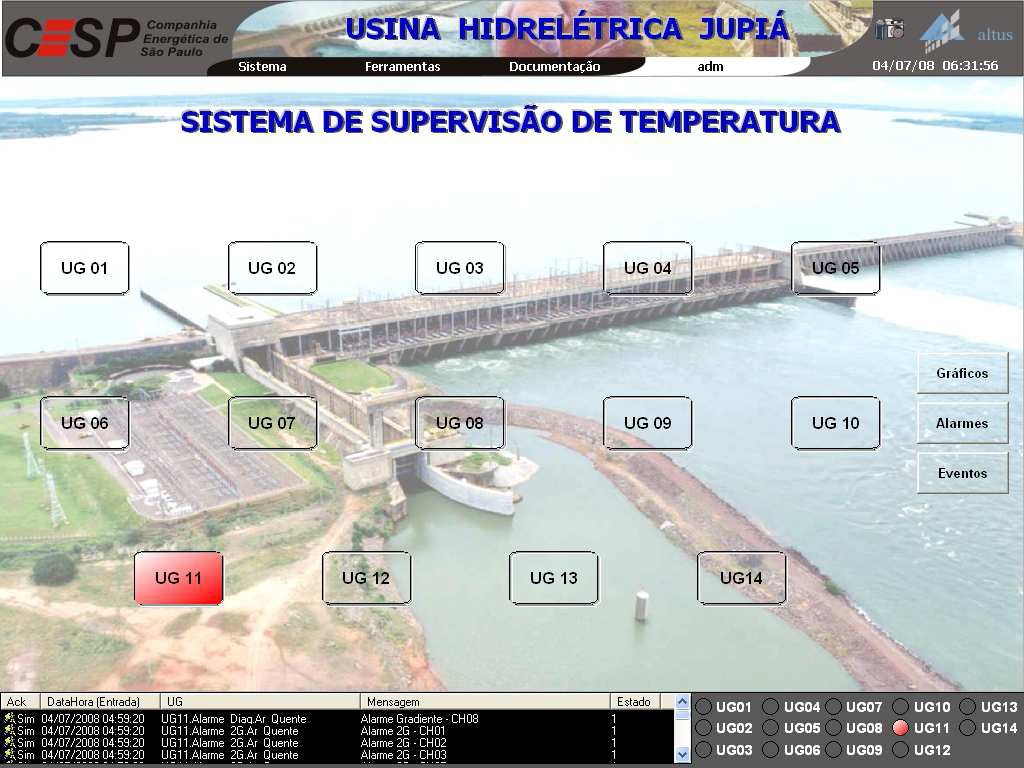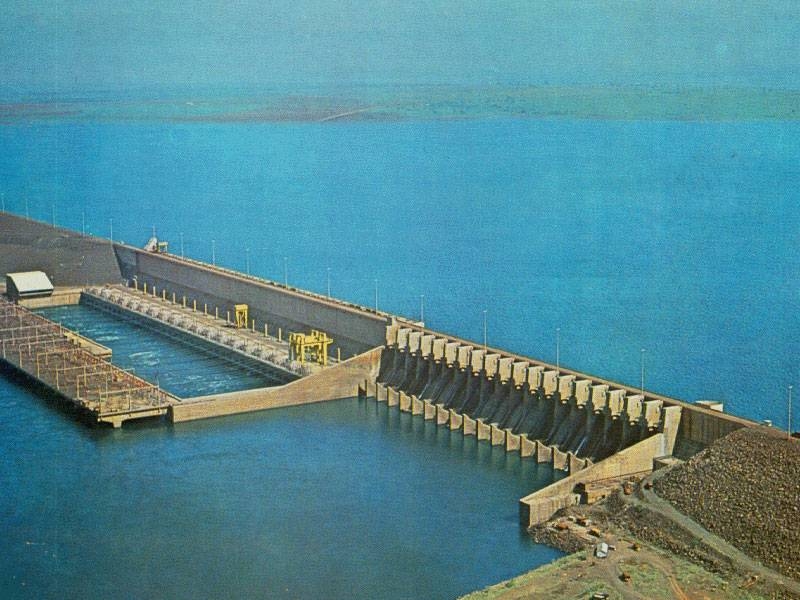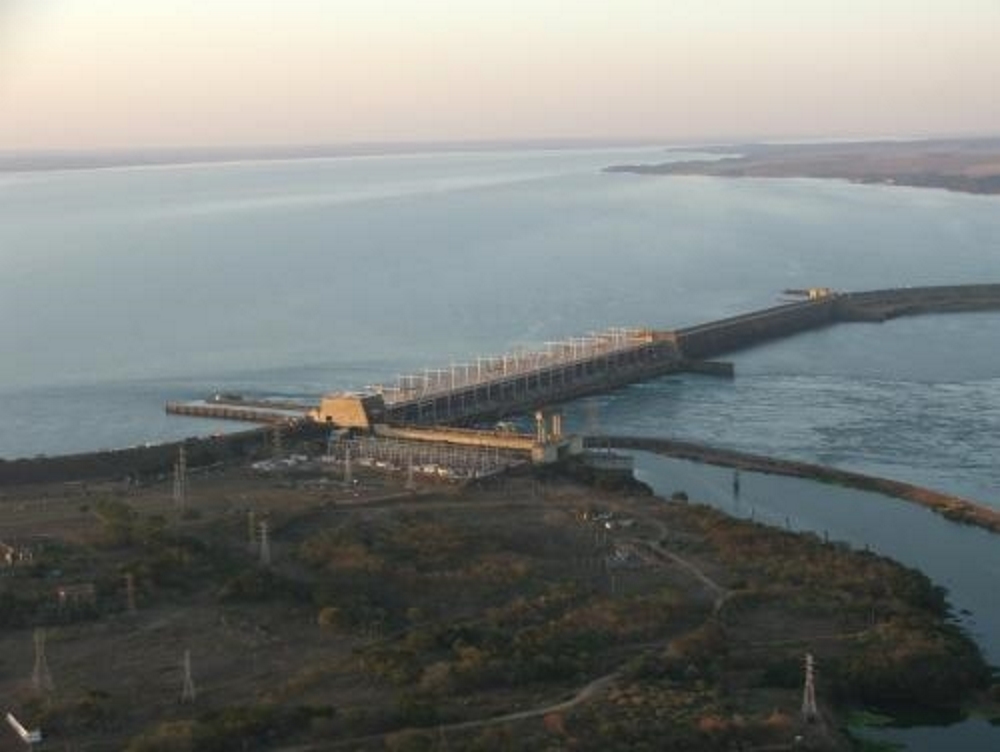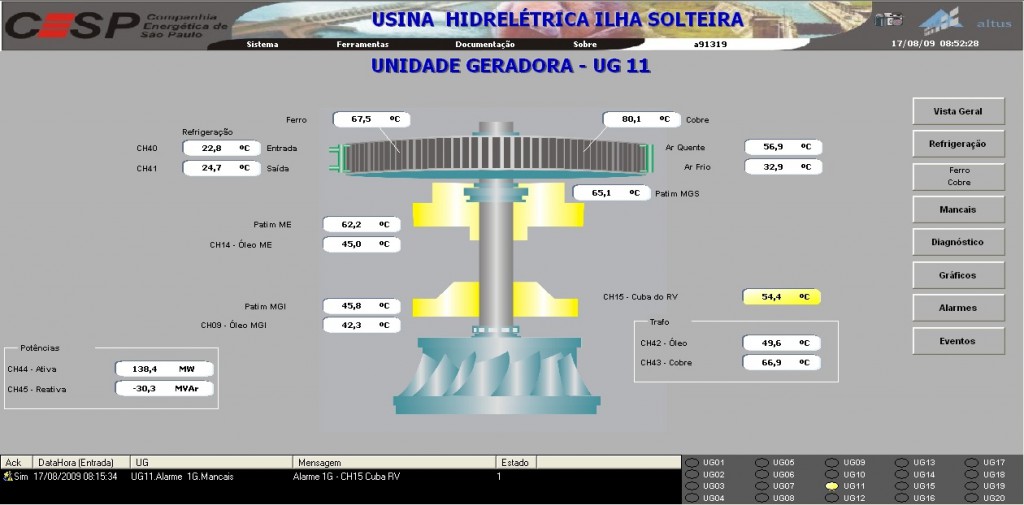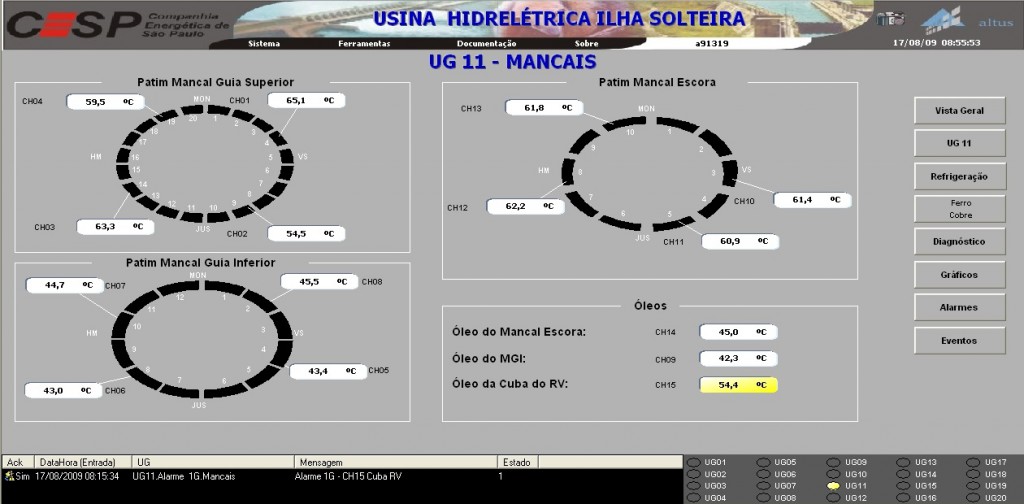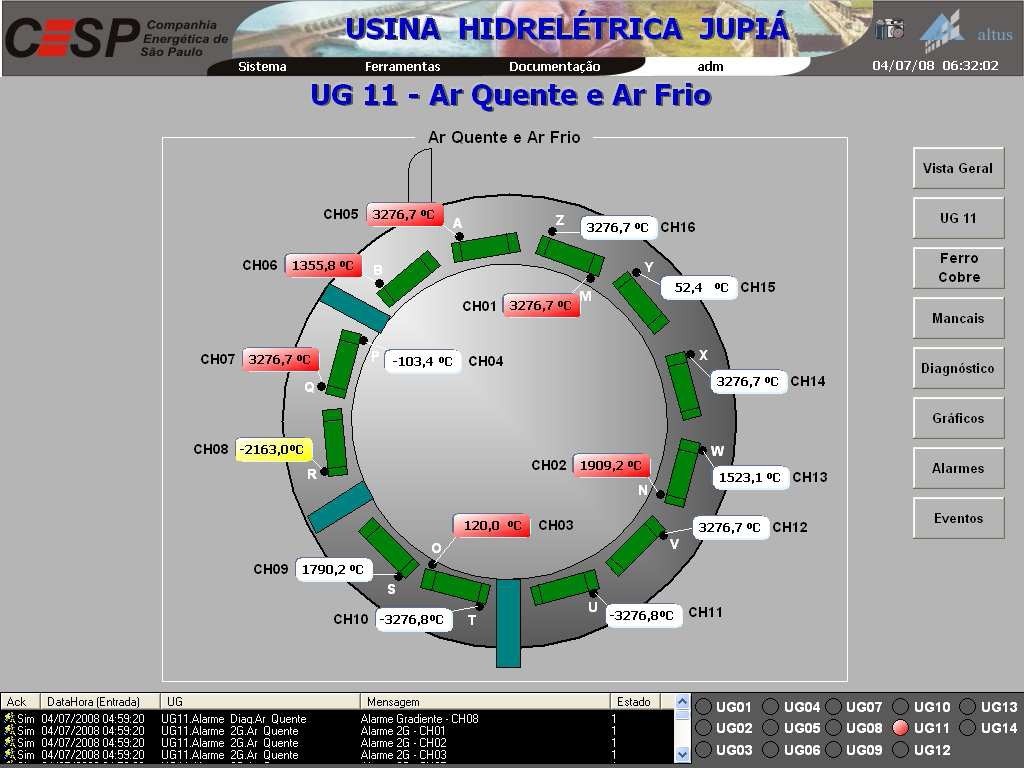Elipse E3 in Ilha Solteira and Engenheiro Souza Dias Hydroelectric plants (Jupiá)
This case present’s the application of the Elipse E3 solution to improve the monitoring of the temperature found in the generating units of Ilha Solteira and Engenheiro Souza Dias (Jupiá) plants

Needs
CESP (Companhia Energética de São Paulo) is the largest power generation company in the state of São Paulo and the third largest in Brazil. The Company has 6 hydroelectric plants, 57 generating units, an installed capacity of 7,456 MW and assured power of 3,916 MW (average), representing 8% and 10% of the national total, respectively.
CESP’s hydroelectric plants are distributed through three drainage basins:
• Paraná River basin’s plants: Ilha Solteira, Engenheiro Sérgio Motta (Porto Primavera) and Engenheiro Souza Dias (Jupiá)
• Tietê River basin’s plant: Três Irmãos
• Paraíba do Sul River basin’s plants: Paraibuna on Paraibuna River and Jaguari on Jaguari River
To improve the monitoring of the temperature found in the generating units of Ilha Solteira and Engenheiro Souza Dias (Jupiá) plants, CESP has chosen E3, Elipse Software’s SCADA solution. To do so, the company has worked alongside Altus Sistemas de Informática S/A, the systems integrator responsible for the software application. The idea is to reinforce supervision, which up until now had been performed by a simple local HMI system.
Today, E3 supervises a total of six of the 20 units in Ilha Solteira, and 9 of the 14 units in UHE Jupiá. Altogether, 16 software copies were purchased for this project, eight for each plant: one Server, five Viewers, one Studio, and one Web.
Ilha Solteira hydroelectric plant
Located on Paraná River, between the towns of Ilha Solteira and Selvíria, Ilha Solteira hydroelectric plant is the largest in the state of São Paulo, and the third largest in Brazil. It comprises, alongside Engenheiro Souza Dias (Jupiá) plant, the world’s sixth largest hydroelectric complex. Finished in 1978, its embankment is over 5.6 kilometers long, with a reservoir area of 1.2 square kilometers. It has a total amount of 20 generating units, with an installed capacity of 3,400 MW.
Engenheiro Souza Dias (Jupiá) hydroelectric plant
Also located on Paraná River, between the towns of Andradina, Castilho, and Três Lagoas, Engenheiro Souza Dias (Jupiá) hydroelectric plant was founded in 1974. It comprises 14 generating units, with an installed capacity of 1,500 MW, and two auxiliary generating-engine groups with an installed capacity of 4,700 KW each. Its embankment is over 5.4 kilometers long, with a reservoir area of 330 square kilometers.
Solution
Prior to the introduction of this system, the temperature of the generating units was monitored through a local HMI system, which indicated it on a panel next to each unit. Because of that, operators were forced to check temperatures personally at the unit. In addition, data sampling was very limited, and charts and reports could not be issued.
Aiming at a more improved monitoring system, CESP has decided to implement the Temperature Supervision System (TSS), a system based on Elipse Software’s E3 and Altus’s Point Series PLC. This represents a more advanced and reliable system, which allows operators to supervise the temperature of generating units directly on their computers’ screens, in a more effective way.
To better understand this new reality, it is necessary to visualize the generating units in more depth. Each one comprises one Altus Point series PLC and 56 PT100 (in Ilha Solteira) or NI100 (in Jupiá) sensors, installed alongside the different components responsible for electric power generation (bearings, generator’s copper and iron, and cooling system).
Through these sensors, Point PLC reads the temperature verified at different points integrating the generating unit. Subsequently, E3 communicates in network with the PLCs, storing data in its database in different formats (historics, reports, and charts). To access them, the user must log in to the internet and input their password.
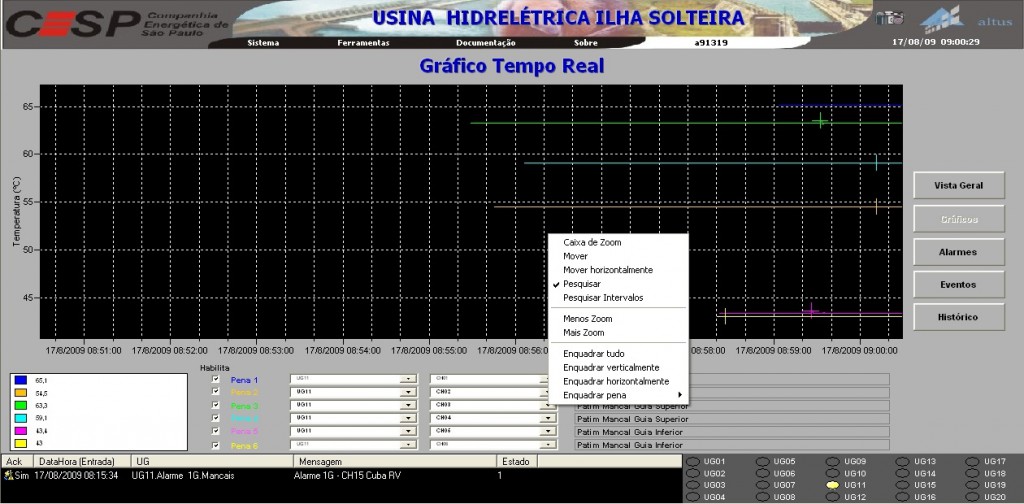
Figure 5. Screen displaying real-time graphical variation of the temperatures registered in UHE Ilha Solteira
Once temperatures are stored in a database, E3 allows comparing different histories to check how balanced the generating units are. The software’s backup capacity is one-year long. However, it is required that operators not only be allowed to check temperatures, but also be warned in case these temperatures become very elevated, which can cause failure in the engines and in the generating units. To prevent this from happening, E3’s visual and sound alarms system is activated whenever the temperature reaches a critical level. This pivotal resource keeps occurrences from further evolving.
There are two levels of criticality in the alarms system, depending on the needs of the place being monitored. For the sensors installed in the bearings, which are devices whose function is to diminish friction between different parts of the generating unit, the system enables 1st and 2nd degree alarms. The first indicates warning, while the second indicates hazard, and it requires the immediate shutting off of the generating unit. The alarms of the other sensors are all 1st degree alarms, and will only fire as warning.
This system also allows the operators to disable monitoring sensors automatically. This happens whenever a sudden change in temperature is noticed in an interval smaller than 5 seconds (interval defined by CESP), or whenever there is a short circuit or any other failure observed in one of the sensors installed in the plants. The PLC then detects this abnormal variation, deactivates the point’s supervision, and E3 informs this to the operator, who will then proceed with the point’s maintenance. Thus, the risk of a faulty alarm trigger by a value wrongly recorded in an out-of-order sensor is made impossible.
Benefits
- Online supervision centralized in the Unit’s Temperature Supervision System.
- More productivity for the maintenance team, which can observe historic charts and anticipate problems that may occur in the generator because of oscillations in temperature.
- Remote changes in trip and alarm setpoints.
- Improved maintenance, since E3 monitors all errors such as short circuits, or fails in sensors or other devices comprising the generating unit.
- Comparable different temperature histories, referring to different generating units stored in E3’s database.
- Backup capacity for generating units temperature history of one year.
- Remote supervision of information via web from CESP’s Engineering Center, in São Paulo.
Final Remarks
E3 has completely achieved its purpose in this system, allowing operators to obtain a complete record of the temperatures registered in the generating units in Ilha Solteira (six) and Jupiá (nine) plants. Its follow-up was made possible thanks to the software’s network communication with the Point series PLC in the generating units. Now, operators can monitor temperatures from any computer, as long as they have access to the supervisory system’s screens on the internet. Another advantage rendered by E3 is allowing operators to compare different temperature histories from each generating units, a pivotal benefit to check temperature conditions in the plants as a whole.
Datasheet
Client: Companhia Energética de São Paulo (CESP)
Systems Integrator: Altus Sistemas de Informática S/A
Software: Elipse E3
Number of copies: 2
Platform: Windows XP Professional
Number of I/O points: 10000
I/O Driver: Alnet II in TCP-IP
